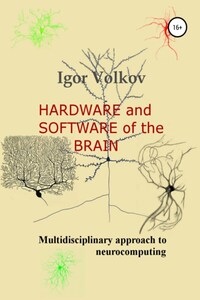Fig. 1.
The most rough division is: the hindbrain, midbrain, and forebrain. In Latin this will be: rhombencephalon, mesencephalon, and prosencephalon. Going in down-top direction, rhombencephalon is further subdivided into myelencephalon and metencephalon and prosencephalon – into diencephalon (the intermediate brain) and telencephalon. Latin terms sound terribly, but fortunately they may be encountered mainly in very specialized literature. Myelencephalon is also called medulla oblongata (the oblong brain).
Another often term is the brain stem. It begins from the spinal cord and includes medulla oblongata, pons of the hindbrain, the midbrain, and sometimes diencephalon too.
The next tier of anatomy is more relevant to functionality.
Fig. 2.
The reticular formation is an elongate structure or a chain of nuclei spreading from medulla oblongata into diencephalon. The reticular formation is located in the middle of the brain stem and may be considered as its core.
Fig. 3.
Metencephalon consists of cerebellum and pons. The former is also called a small brain because its structure is a simplified variant of the big brain. Pons means a bridge. It is formed by axons going to and from hemispheres of cerebellum. Important ascending and descending pathways obviously travel through pons. Also it includes the reticular formation and several specialized nuclei.
The dorsal part of the midbrain is formed by tectum that is the roof. It consists of the inferior and the superior colliculi (2 pairs of hillocks). The superior colliculus implements low-level visual processing. The inferior colliculus does the same for hearing.
If we need the line which separates peripheral devices from a computer case, it's here. With a few exclusions, what was named previously corresponds to controllers of periphery while the thalamus of diencephalon may be regarded as several expansion cards of PC.









